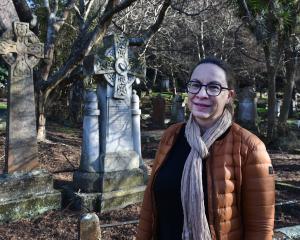
TEACHERS FOR SOUTH AFRICA: New Zealand Women at the South African War Concentration Camps
Ellen Ellis
Whitireia Publishing
It seems extraordinary in retrospect to learn how enthusiastically New Zealand men rushed to enlist to join with the British troops and answer the call of Empire by fighting in it. And in this book, full of fascinating facts, it was no surprise to learn that Maori men were denied selection on the orders of the Imperial Government (whose justification was that it was a white man's war).
I had a grandfather who served in this war in its latter stages but learned little about it from him, his main concern seeming to be the ill-treatment of the horses used there.
Ill-treatment of horses there may have been; the treatment of humans, as outlined in the book, is horrifying.
Up to 30,000 Boer farmhouses, along with their livestock and crops, were destroyed, and enlistees were detailed to bring all "undesirables", including women and children, into encampments. More than 40 of these concentration camps were established. They housed Boer civilians and sometimes their servants, made homeless by the farm-burning operations. Deaths resulting from food shortages, unsanitary conditions and disease were estimated at between 25,000 and 28,000 Boers and at least 15,000 Africans. In both cases, child mortality made up to 80% of the deaths.
In light of those statistics, the following quote from the English acting director of education in South Africa is ironic to say the least. When recruiting teachers from England and Scotland, he stated as one of his principal aims "the winning over of the young generation of Dutch Africaner to English ways of thought and speech, and English ideas of truthfulness and loyalty".
By the time this active recruitment was taking place, the fighting was largely over. The push for Boer children in the camps to be taught in English reached New Zealand in the form of advertisements being placed in New Zealand papers, and the 20 women teachers whose stories are followed in this book were selected to go on what - for most of them - was their first journey out of New Zealand.
The book is sensibly divided into sequential parts, with Part 2 giving potted biographies of the women chosen. I loved these as they were a mix of facts with humorous touches - and most had accompanying photos.
Two of these intrepid women were in their 20s; most were in their 30s and all had enrolled to vote as soon as the 1893 opportunity had arisen. Many had taught in isolated sole-charge country schools, so were used to coping with country hardships. Some were dealing with mixed classes of up to 200 pupils.
Being feisty and independent, the adventure of teaching in South Africa would have been appealing and their motivations for doing so seemed to be more the longing for new experiences and new landscapes, rather than one mother's vision of a South Africa overrun with military men and eligible bachelors. Whatever their motivations, not one of them returned to their previous positions, even though those had to be held open.
One gains the impression of how important Dunedin was in this era.
Four of those chosen were from Dunedin, the farewell speech was delivered by the headmaster of Dunedin Normal School; official documents were signed and the formal group photograph was taken here before the group's eventual departure from Bluff. And when eight of them found themselves together in Merebank, a camp housing the overflow from camps in the Transvaal, they nicknamed their group "The Octagon".
As well as being informative about the privations suffered in some of the camps, Ellen Ellis has revealed unexpected pleasures and surprises.
Some of the teaching methods used were original and innovative, some of the quotes used were wonderfully funny viewed in a modern context.
She has also succeeded in telling her readers enough about the characters to develop warm feelings towards some of the tolerant ones who saw the best side of the people they were dealing with and in one case even found herself inserting clicks into her English as she spoke mostly a kind of Xhosa.
In fact, you find yourself getting to identify with the women so well that you want to have a picture of them in your mind as you read about them, and this is the only criticism I would have of the way the book is set out.
Photos and information about the women scattered randomly throughout the initial text would have been better arranged in alphabetical order. It was frustrating to have to keep flipping through Part 2 to remind myself of their backgrounds and what they looked like.
This is a thoroughly researched, absorbing slice of history, easily read and is interspersed with photos and anecdotes. There is also a satisfying follow up to the women's stories, titled "Fourteen weddings and some funerals" at the end of the book, when you find out what happened next.
- Patricia Thwaites is a retired schoolteacher.












